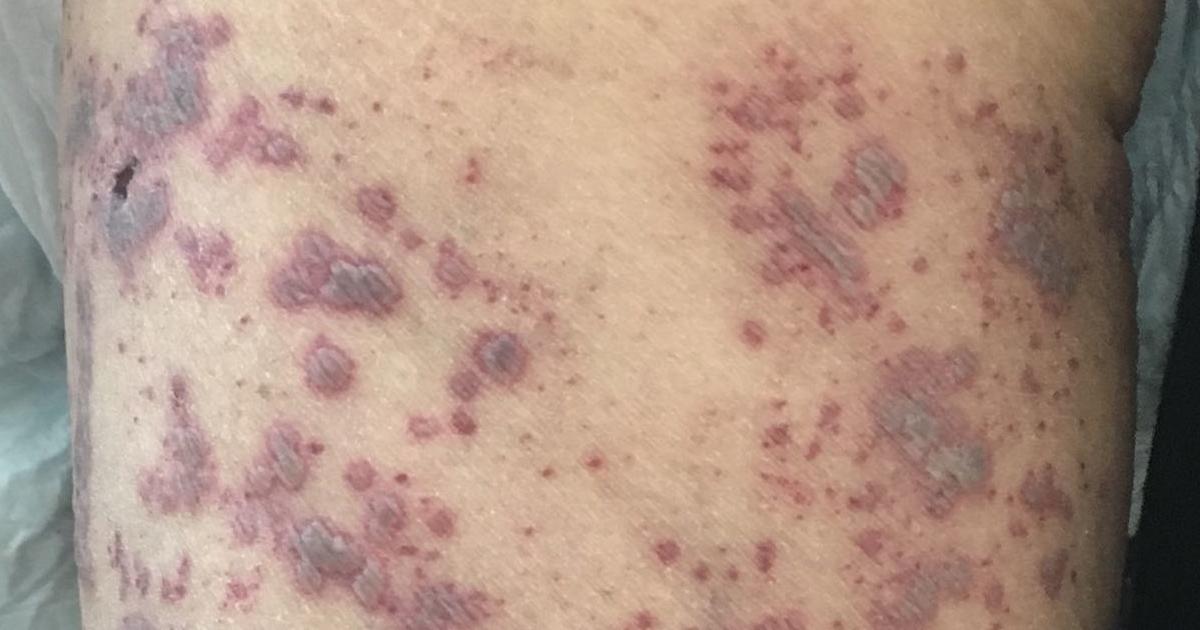Warning Signs Of Granulomatosis With Polyangiitis
Granulomatosis with polyangiitis, formerly referred to as Wegener's granulomatosis, is a particularly rare kind of vasculitis. The disorder causes inflammation of small and medium-sized blood vessels, especially in the nose, throat, kidneys, and lungs. The inflamed areas are known as granulomas, and these can reduce normal organ function. Blood circulation to the impacted areas may also be reduced. Granulomatosis with polyangiitis currently has no known causes or identifiable risk factors, and the majority of cases are diagnosed in individuals between forty and sixty-five years old.
To diagnose this ailment, doctors perform blood tests, chest x-rays, CT scans, and other imaging studies. A tissue biopsy can be used to confirm the diagnosis. If left untreated, granulomatosis with polyangiitis may lead to blood clots, kidney damage, and scarring of the skin. Treatment depends on which organs are affected and typically involves prescription medication to prevent a relapse. Depending on their symptoms, patients will generally need to have regular monitoring with several specialists.
The symptoms of granulomatosis with polyangiitis often progress rapidly. Patients who notice any of the warning signs described below should see a doctor promptly for an evaluation.
Wheezing Or Shortness Of Breath

Patients with granulomatosis with polyangiitis may experience wheezing or shortness of breath (dyspnea) due to the inflammation of the lungs that is associated with this disorder. Since these symptoms could be indicative of a blood clot or endobronchial disease, both of which are complications of this disorder, a thorough investigation is essential. To properly assess wheezing or shortness of breath, the physician will start by listening to the patient's lungs with a stethoscope. They will check for any stridor, labored breathing, or other abnormal findings. CT scans, blood tests, pulmonary function tests, bronchoscopy, and otolaryngology assessments may be performed to investigate possible underlying causes. Patients with wheezing or dyspnea are typically treated with immunosuppressants such as prednisone, cyclophosphamide, rituximab, and methotrexate. They may also need advanced treatments provided by interventional pulmonologists. These specialists can offer targeted treatments, including glucocorticoid injections into the lungs. Depending on the severity of the symptoms, some patients could benefit from supplemental oxygen therapy at home.
Learn more about the symptoms of granulomatosis with polyangiitis now.
Pus Drainage From The Nose

Pus drainage from the nose can develop if granulomatosis with polyangiitis affects the nasal passages. This symptom is usually accompanied by crusts in the nasal passages, and patients could also have nosebleeds, sinus infections, and nasal stuffiness or congestion. To assess these signs, the doctor will examine the inside of the nasal passages with a lighted scope to look for inflammation, bleeding, discharge, and other abnormalities. Depending on the severity of the inflammation and complications, patients may need to be treated by an ear, nose, and throat specialist.
Rarely, pus drainage from the nose may cause a nasal abscess (a pocket of pus), and this might require a minor operation for drainage. To improve the management of nasal symptoms, patients may need to take pain medications, and antibiotics are often required. Occasionally, repeated episodes of nasal issues associated with granulomatosis with polyangiitis could cause the patient to have a loss of height at the bridge of the nose. This is known as saddling, and it develops when the nasal cartilage becomes weak.
Uncover more warning signs of granulomatosis with polyangiitis now.
Skin Sores, Rashes, And Other Issues

The skin sores and rashes linked to granulomatosis with polyangiitis differ from individual to individual. One of the most frequently seen skin rashes in patients with this condition is referred to as palpable purpura. This type of rash occurs on the legs and consists of clusters of tiny dots that are normally purple or red. Some granulomatosis with polyangiitis patients may experience frequent bruising, and sores or cuts might be slow to heal.
Since this disorder reduces blood circulation, patients might develop Raynaud's disease, an ailment caused by inadequate blood supply to the fingers and toes. Patients with Raynaud's disease usually have an extreme sensitivity to cold temperatures, and their fingers and toes may turn purple, red, or blue during exposure to cold air. In some cases, the tissue of the fingers or toes may die, and gangrene could occur. Patients who notice any skin changes, including bruising and skin discoloration, should see a dermatologist or other specialist for prompt diagnosis. Prescription medicine may be needed to resolve some skin rashes, and lifestyle modifications are often useful for Raynaud's disease.
Continue reading to reveal more granulomatosis with polyangiitis symptoms now.
Coughing With Bloody Phlegm

Coughing with bloody phlegm is a sign of lung involvement seen in patients with granulomatosis with polyangiitis. This symptom can be caused by inflammation in either the upper or lower airways. Patients who experience coughing with bloody phlegm should seek an urgent evaluation from a pulmonologist or specialist since bloody phlegm may be a sign of a blood clot in the lungs. Coughing up blood could also indicate the presence of pneumonia or some heart problems. To evaluate a patient's cough, the clinician will listen to the patient's chest with a stethoscope and perform lung function studies and imaging tests. Patients may also need to have a bronchoscopy. Depending on the severity of the cough and the amount of blood a patient may be losing, treatment options could include steroids, antibiotics, a bronchial artery embolization, or the insertion of a balloon inside the airway to stop bleeding.
Get more details on the warning signs indicative of granulomatosis with polyangiitis now.
Blood In The Urine

Blood in the urine typically indicates granulomatosis with polyangiitis is impacting the kidneys. This symptom could be a sign of kidney disease, and it may progress to renal failure if left untreated. Since patients with granulomatosis with polyangiitis can have kidney damage with no symptoms, doctors recommend they have periodic urine tests. To assess blood in the urine, clinicians perform both urine and blood tests. If large amounts of blood or protein are found in the urine, patients may have a condition known as glomerulonephritis, an ailment which damages the glomeruli, tiny filters inside the kidneys. Patients with granulomatosis with polyangiitis who also have glomerulonephritis typically require treatment with both immunosuppressants and drugs that lower blood pressure.
